Claesson Koivisto Rune's Palladio tables reference Minimalist sculpture
Milan 2016: the works of Minimalist sculptor Donald Judd and Italian architect Andrea Palladio have informed the design of this set of tables by Swedish studio Claesson Koivisto Rune for Dutch furniture brand Artifort (+ slideshow).
The Palladio collection is made up of a series of circular and rectangular items, described by the designers as "a table in its most essential form".
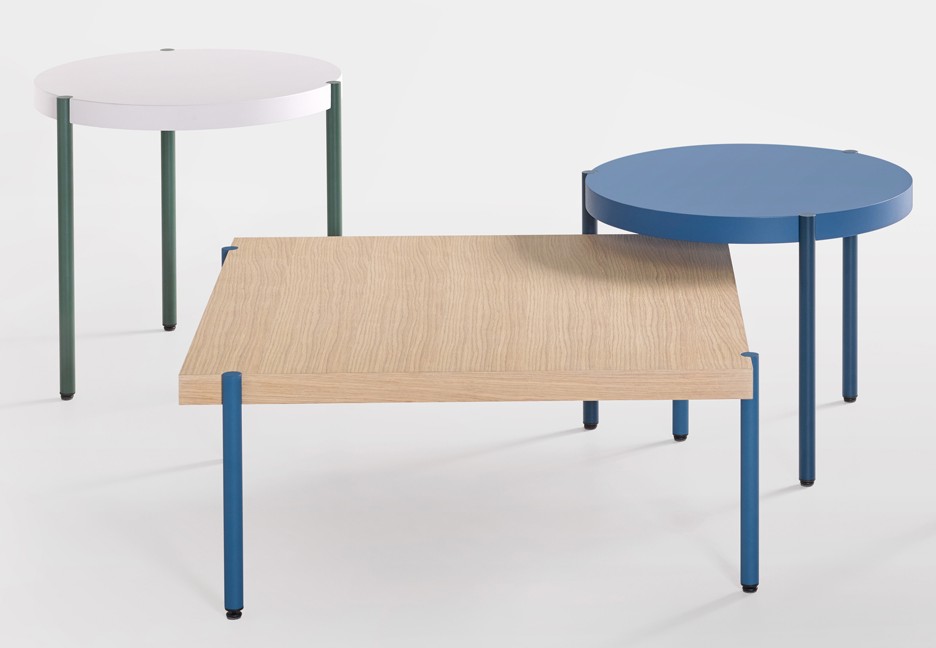
Although they look simple, the products' main design feature is a "virtually invisible" joint between the cylindrical legs and table top.
"The design feature of the Palladio table lies entirely in the leg and top joint detail," said Claesson Koivisto Rune. "Because the connection is so strong an almost endless variation of sizes and proportions of a table is possible."
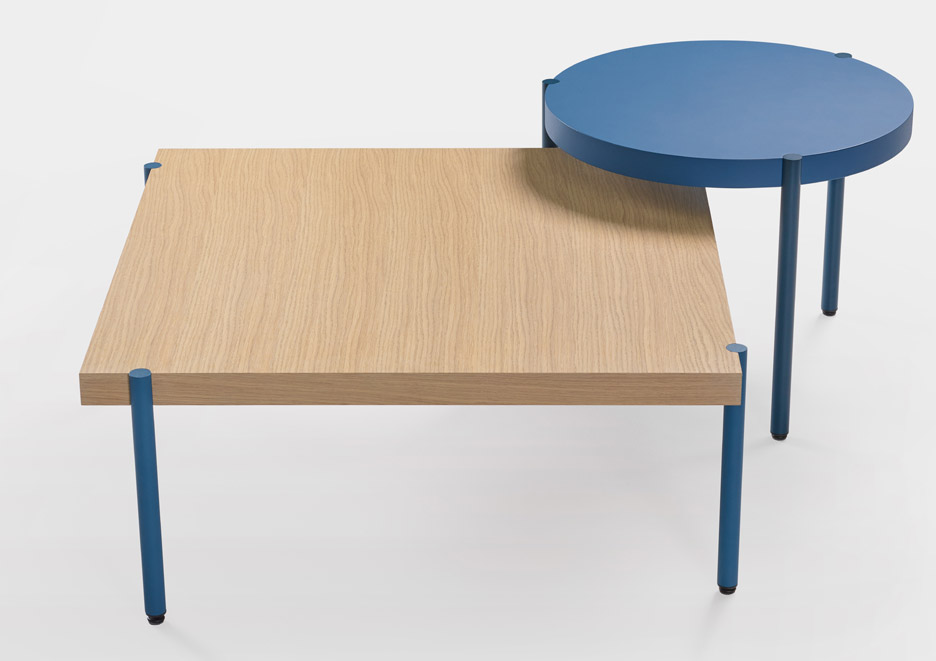
"Less is more, but less is also more difficult," the studio added. "The connection between the leg and top is not just virtually invisible, but needs to be very strong."
This joint is created using a what the designers call a "double pin" fitting, which is built into the side of the five-centimetre-thick tabletop.
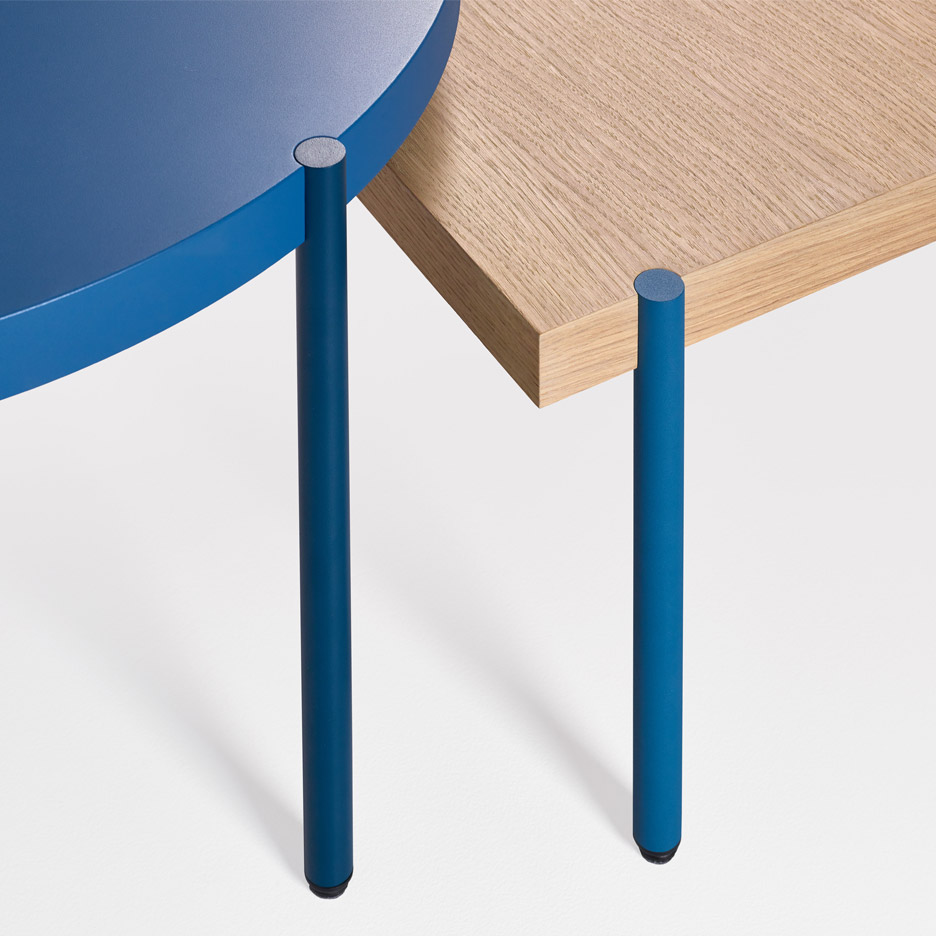
It has been specially developed to brace a steel leg from the inside – leaving the exterior surfaces of the leg clean.
This construction means that there is no need for any other additional side bars or crossbeams, and allows the tables to be easily disassembled and transported.
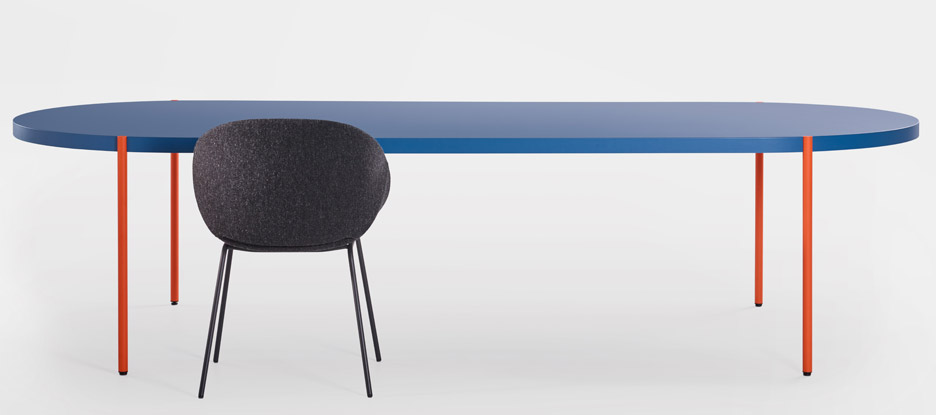
Each of the tables is available in a variety of primary colours and natural wood, and the cylindrical legs are metal.
To ensure designs transcend passing trends, the designers looked to works of Renaissance architect Andrea Palladio and 20th century sculptor Donald Judd.
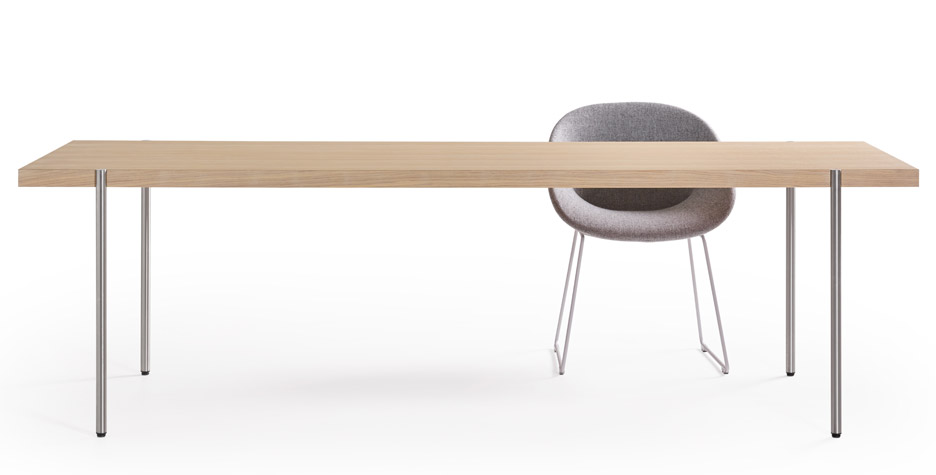
Judd's Untiled 1963, features a cylindrical form recessed halfway into a square volume, inspired the shape of the legs, while Palladio's columns informed the construction.
"Palladio is famous for featuring columns in his architecture," designer Patrick Coan told Dezeen. "There are some early architectural projects where columns are positioned halfway under the horizontal plane that they are holding up."
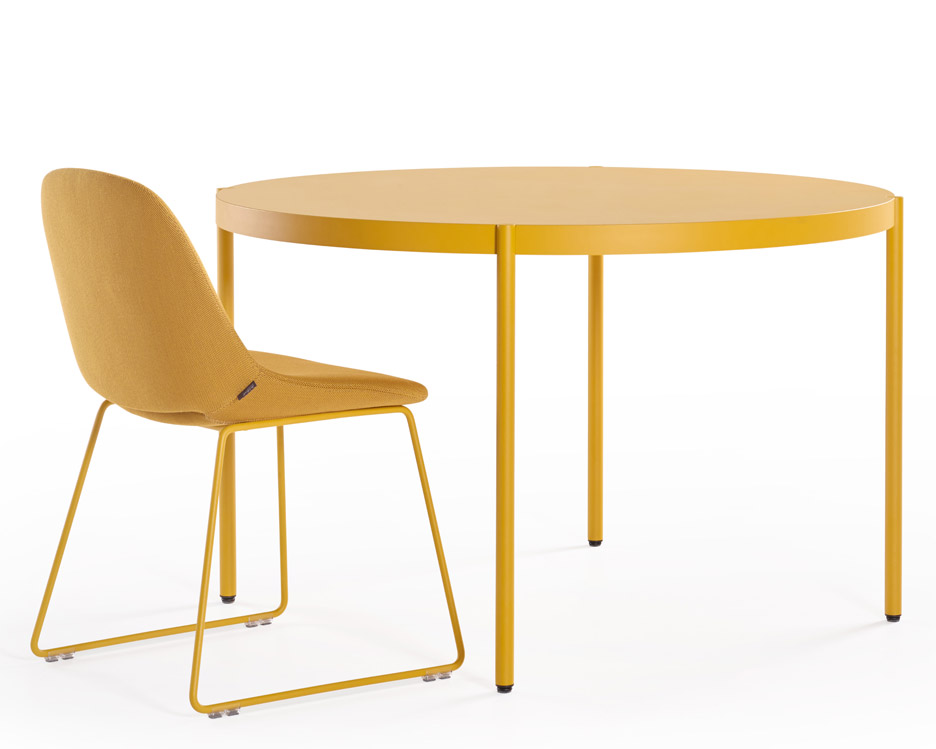
Claesson Koivisto Rune was founded in Stockholm in 1995 by Mårten Claesson, Eero Koivisto and Ola Rune. The studio started out as an architecture office but has since branched out into all aspects of design, including furniture, lighting, interiors and electronics. Recent projects include the Inde/Jacobs art gallery in Marfa, Texas and the Cover collection of chairs and tables for Teknion.
Last year, the multi-discipline studio launched the Smaller Objects label, which offers designers an alternative to the traditional royalty model.
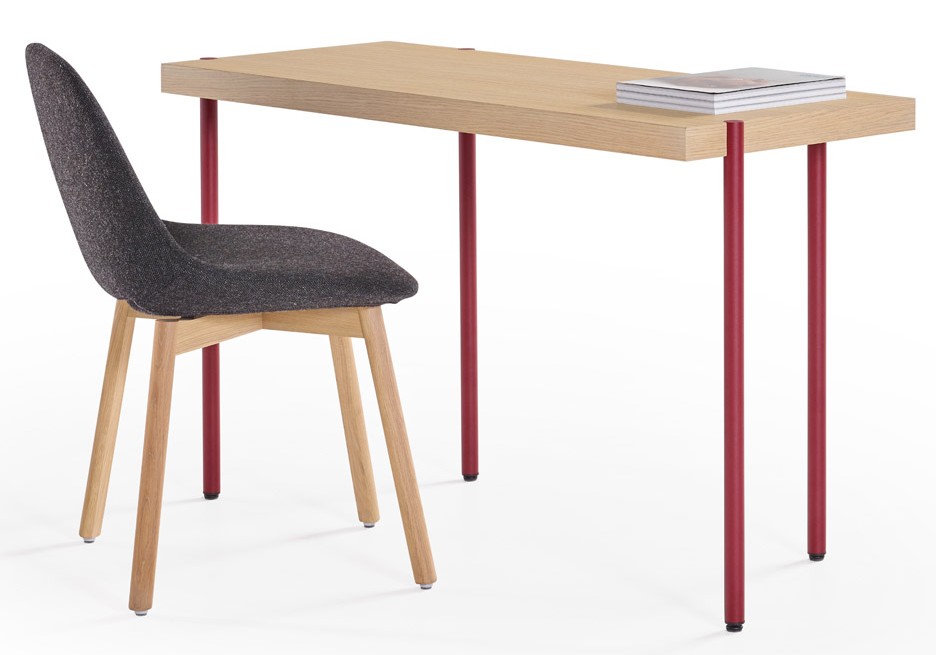
"It's a new era, demanding new business models and new methods of working," Claesson Koivisto Rune co-founder Ola Rune told Dezeen. "Smaller Objects see the designer as an entrepreneur, active not only in the designing but also in the development and business processes."
Artifort is presenting the Palladio collection at Hall 16, Stand F30, during the Salone del Mobile furniture fair during this year's Milan design week, which takes place from 12 to 17 April 2016.
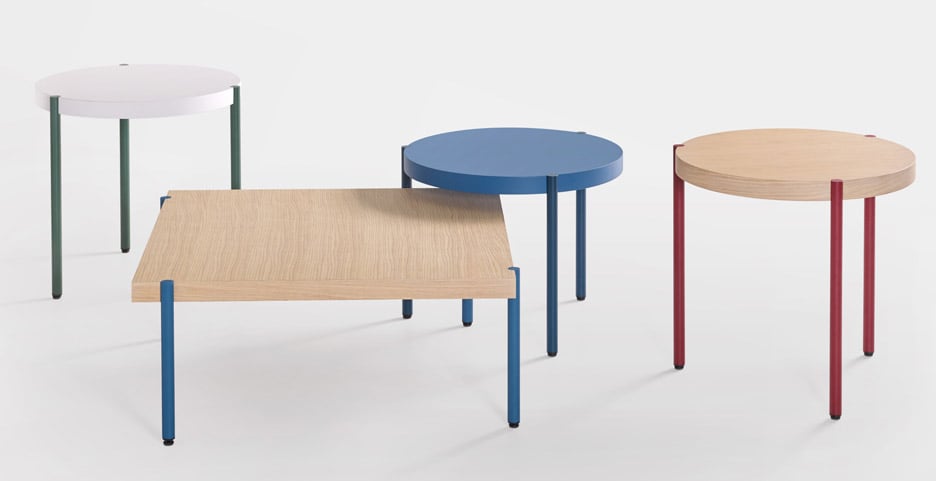
Other projects on show include a collection of "intentionally boring" office furniture, a range of plastic furniture designed specifically for kids, and a table made from resin composite material Jesmonite. Check out Dezeen's guide to 10 unmissable installations and exhibitions during Milan design week »